
10mes10día
Después del feriado del Día Nacional, viajé durante las horas de menor actividad y comencé un recorrido circular por las tres provincias del noroeste (Gansu, Mongolia Interior y Qinghai) con un grupo de turistas.
El avión partió de Kunming y se detuvo en Chongqing. El vuelo a las 6:55 se retrasó media hora y finalmente despegó a las 7:30 llegó a las 11: 30 del mediodía. Aeropuerto de Lanzhou Zhongchuan.
Recuerdo haber venido a Lanzhou hace cinco años, más de una vez. Vuelve hoy. Desde el coche, el nuevo distrito de Lanzhou se ha convertido por completo en una ciudad nueva.
La señal de tráfico desde el aeropuerto de Zhongchuan a la ciudad de Lanzhou está marcada 72 kilómetros. En mi opinión, este es el aeropuerto nacional más alejado de la ciudad en el que he estado.

En el camino, no se ven muchos cambios en las montañas a ambos lados de la carretera. A principios de otoño e invierno, visto desde la distancia, todavía está desnudo y crecen pocos árboles. Viniendo del verde Yunnan hacia el noroeste, siento que el contraste entre la vegetación de las montañas es demasiado grande. Recuerdo que cuando llegué a Lanzhou hace unos años, mis colegas locales me dijeron que la ciudad era responsable del reverdecimiento de las colinas áridas que la rodeaban. Debido a que el suelo de la montaña carece de agua, hay que regarlo con frecuencia. Han pasado varios años, con poco éxito. Al acercarme a la ciudad, había varias colinas. Vi tuberías de agua plateadas erigidas y rociando agua para regar. Un árbol pequeño era exuberante y verde, y también era más alto que una persona. Se puede ver que mientras te esfuerces, aún puedes obtener resultados, pero el costo es alto. Si las montañas áridas se vuelven verdes, puede tener un buen impacto en el clima natural.
Lanzhou, la capital de la provincia de Gansu, se conoce como "Lan" o "Gao". Desde el establecimiento del condado en la dinastía Qin, Lanzhou tiene una historia de más de 2200 años. Desde la antigüedad, ha sido un centro de transporte y una fortaleza militar que "conecta las cuatro regiones y conecta miles de millas". Ciudad importante en la antigua Ruta de la Seda. En la antigüedad, se llamaba Jincheng, que significa "Jincheng Tangchi". El río Amarillo atraviesa la ciudad y es conocido como la "Perla del Río Amarillo".
Al llegar a Lanzhou, las mejores opciones para los lugares de registro de celebridades de Internet son, naturalmente, el Puente de Hierro del Río Amarillo, la Escultura de la Madre del Río Amarillo y el Parque Waterwheel. Estos tres lugares escénicos están todos en la costa. Son edificios emblemáticos de Lanzhou y una parte importante de la cultura del estilo del Río Amarillo de Lanzhou.
El grupo de viaje se organizó en Lanzhou. Nosotros llegamos a Lanzhou justo al mediodía y teníamos medio día en Lanzhou para organizarlo nosotros mismos. Cuando llegues al hotel, guarda tu equipaje y descansa un poco. El grupo subió por el río Amarillo y buscó paisajes a lo largo del camino.
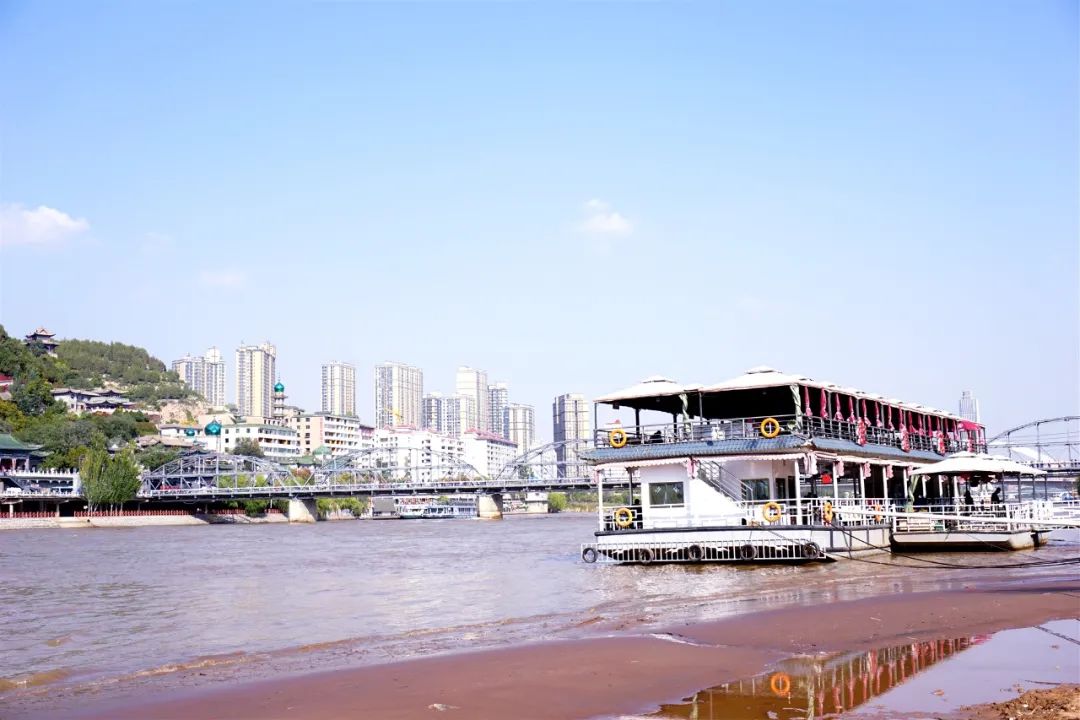
El río Amarillo que pasa por la ciudad alguna vez fue un obstáculo en el centro de transporte de Lanzhou. Había una vez una canción popular: "El río Amarillo es peligroso, el río Amarillo es peligroso; lo es. imposible cruzar la inundación, y es difícil navegar en la inundación. Cruzar el río es como el día siguiente, cruzar el río es como cruzar la Puerta del Infierno!”<it1. >. Las personas de los lados norte y sur del río Amarillo tenían que cruzar el río Amarillo en pequeñas embarcaciones y balsas de piel de oveja en verano y otoño. En invierno, el río se congelaba y los barcos y balsas no podían cruzar, por lo que sólo podían cruzar el río. caminando sobre el hielo. El deseo común de los funcionarios y el pueblo locales es construir un puente sobre el río Amarillo para facilitar el tráfico a través del Estrecho.

(Puente flotante de Zhenyuan. La imagen está tomada de Internet)
Durante el período Hongwu de la dinastía Ming, el duque Feng Sheng de la dinastía Song y el duque Deng Yu del estado de Wei construyeron puentes flotantes sobre el río Amarillo en Lanzhou debido a las necesidades militares. Sin embargo, el puente de pontones sólo se puede construir cuando el hielo se derrite. En invierno, el río se congela y tiene que romperse. A menudo es derribado o destruido y ha sido reubicado varias veces. En el decimoctavo año de Hongwu (1385), Yang Lian, el comandante de la Guardia de Lanzhou, reubicó y construyó el Puente Flotante de Zhenyuan, conocido como el "Puente No. 1 del mundo". la ubicación actual del Puente de Hierro del Río Amarillo de Lanzhou. El puente de pontones "utiliza veinticuatro barcos gigantes que cruzan el río, con vigas, tablas y vallas de madera. Hay cuatro pilares de hierro en los lados norte y sur, cuarenta y cinco pilares de madera y dos pilares de hierro". cables, cada uno de cien metros de largo, cuerdas marrones, de lino y de cuero se pertenecen entre sí, dobladas en invierno y construidas en primavera" (Volumen 9 de "Gansu New General Chronicles").
"Cada año, cuando el hielo se derrite, se necesitan cientos de personas para construir un puente, ya sea en la orilla, en un barco o en una balsa. El barco se baja lentamente desde la corriente arriba con una cuerda gigante, y cuatro o cinco grandes Las cestas se atan al barco. Las cestas se llenan de piedras. Cuando el barco flota hacia el lugar correcto, la cesta llena de piedras se arroja inmediatamente al río. Después de que el barco se estabiliza en el río, se conecta inmediatamente con cáñamo. cuerdas y cables de hierro, para que se complete el puente "Se ve que el proyecto no es fácil, y el puente se completa año a año. de esta manera. Aunque todavía es la temporada de invierno y la construcción de primavera, ha hecho que los viajes a través del Estrecho sean mucho más convenientes y ha tenido un gran impacto en la economía y el ejército de Lanzhou e incluso del noroeste. .
Hoy en día, todavía hay un pilar de hierro general en la orilla sur del puente de hierro, que registra el ascenso y caída del Puente Flotante de Zhenyuan en los últimos 500 años.
Durante el período Guangxu de la dinastía Qing, se puso en la agenda la construcción de un puente de hierro sobre el río Amarillo. El 28 de octubre, año 32 del reinado del emperador Guangxu de la dinastía Qing (1906), la Administración Estatal de Asuntos Exteriores de Gansu y la firma alemana Taylor & Co. firmaron formalmente un contrato de reparación para el Puente de Hierro del Río Amarillo de Lanzhou, y Comenzó los preparativos integrales para la construcción del Puente de Hierro del Río Amarillo de Lanzhou.
El Puente de Hierro del Río Amarillo de Lanzhou, también conocido como Puente Zhongshan, está ubicado en la sección media de Binhe Road en la ciudad de Lanzhou, al pie de la montaña Baita. Es el primer puente real sobre el Río Amarillo de 5.464 kilómetros, como se le conoce. como el "Puente número uno sobre el río Amarillo en el mundo". En 1942, pasó a llamarse "Puente Zhongshan" en memoria del Dr. Sun Yat-sen. El puente de hierro fue diseñado por American Bridge Company, construido por la firma alemana Taylor & Co. y construido por artesanos chinos.
Según la "Inscripción de la creación del Puente de Hierro del Río Amarillo de Lanzhou", la construcción del Puente de Hierro del Río Amarillo de Lanzhou comenzó en febrero del año 33 del reinado del Emperador Guangxu de la Dinastía Qing (1907) y Se completó en julio del primer año de Xuantong (1909), y tardó casi dos años y medio y costó 306.600 taeles de plata.
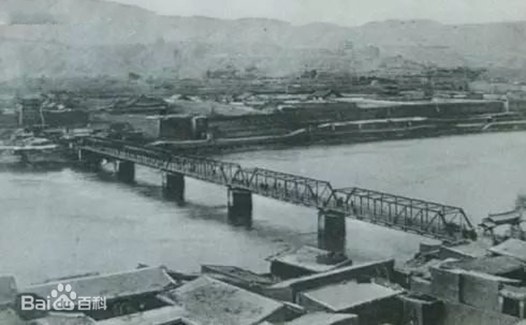
(Foto antigua del Puente de Hierro. La foto está extraída de Internet)
La estructura superior del Puente de Hierro del Río Amarillo era originalmente una armadura de acero de tipo trapezoidal. En 1954, la ciudad de Lanzhou renovó el Puente de Hierro del Río Amarillo de Lanzhou y reemplazó el marco de arco original en forma de escalera con cinco vigas de arco de marco de acero en forma de arco. tablero de un puente de chapa de hierro. Después de eso, se realizaron cinco reparaciones y refuerzos importantes. Ahora está cerrado a los vehículos de motor y se ha convertido en un puente sólo para peatones y vehículos sin motor. Es un edificio emblemático en Lanzhou y un lugar popular para que turistas de todo el mundo visiten Lanzhou.
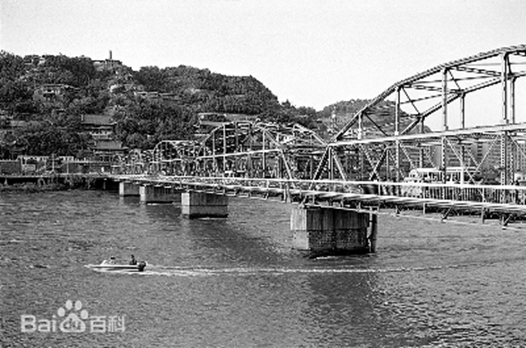
(El Puente de Hierro del Río Amarillo después de su renovación en 1954. La fotografía está tomada de Internet)
Hay un flujo constante de personas en el Puente de Hierro sobre el Río Amarillo. Los peatones tienen prisa y los turistas luchan por elegir una buena posición y ángulo para tomar fotografías con el puente.
Cruzando el puente hacia la orilla norte está la montaña Baita. Hay una pagoda blanca en la montaña. Desde la distancia, el paso en la montaña también está constantemente lleno de gente. 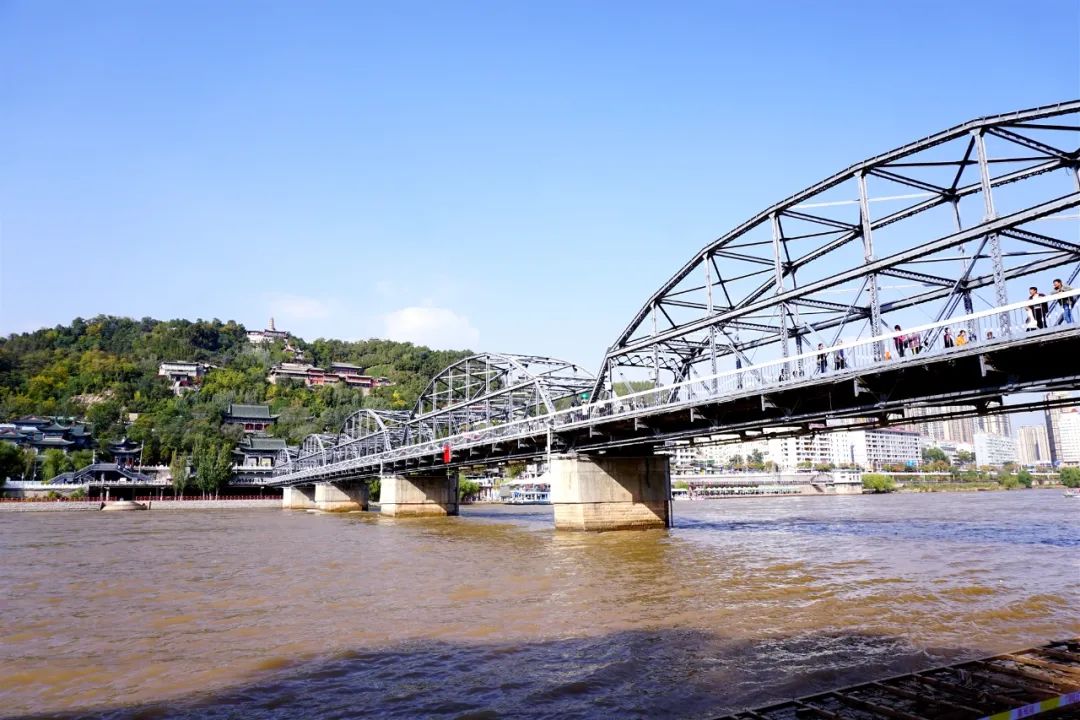

Después de visitar el Puente de Hierro del Río Amarillo, continuamos avanzando hacia el oeste a lo largo del río.
En Lanzhou, la cultura de las norias también es una parte importante de la cultura urbana. No muy lejos al oeste del puente del río Amarillo, hay un parque de norias en el borde del río Amarillo. En el parque hay dos norias altas que giran constantemente impulsadas por el flujo de agua y la otra está parada. silenciosamente a un lado, como si fuera similar al parque de norias. Las que giran se refieren entre sí.
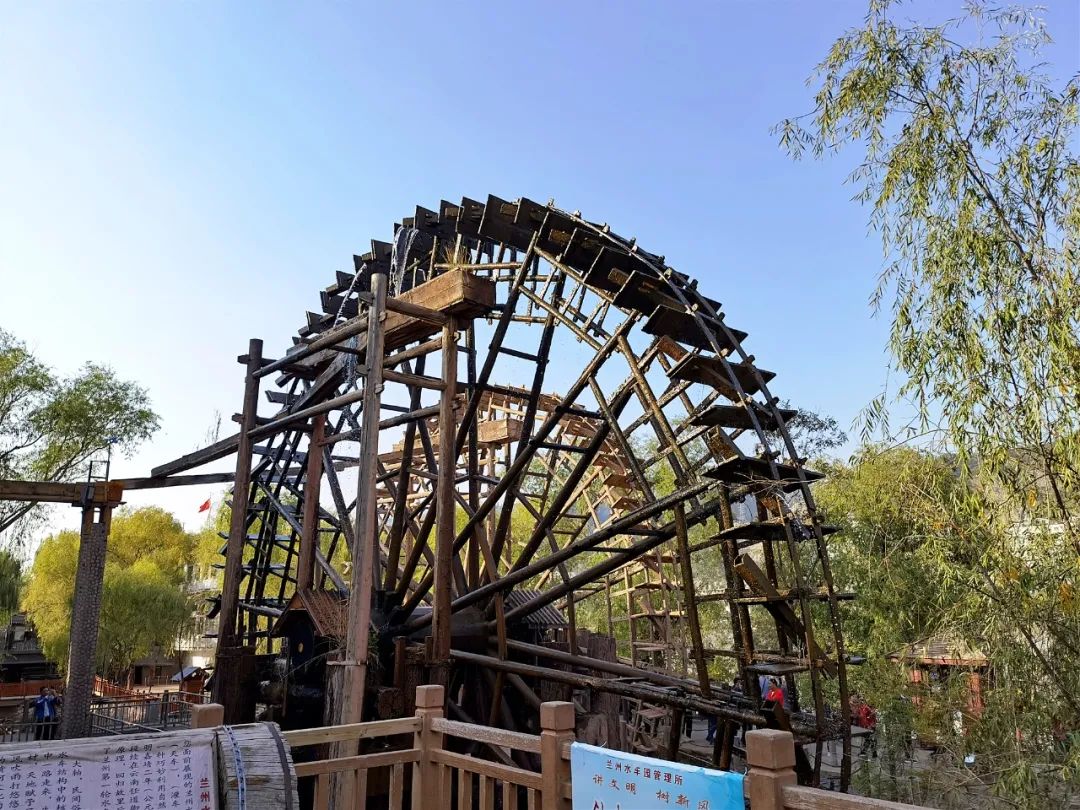
La rueda hidráulica de Lanzhou también se llama "coche elevado", "coche volcado", "coche de llenado" y "coche tigre". Según "Rebuilding Gaolan County Chronicles", Duan Xu, un nativo de Duanjiatan, Lanzhou en la dinastía Ming, "cuando vivía en Xuli, creó un carro volcado y puso el río boca abajo para irrigar los campos. Lo cual fue una idea ingeniosa. Todos los agricultores del río Chuanhe hicieron lo mismo. "Duan Xu, llamado Shaoxian, era un Jinshi en el segundo año de Jiajing en la dinastía Ming. Erudito y talentoso, viajó como funcionario a varias provincias del Sur y se benefició de numerosas administraciones. Cuando se desempeñaba como censor de la provincia de Yunnan, desarrolló un gran interés en los carros de barriles locales, por lo que envió a alguien para que hiciera un dibujo y lo guardara con él. En sus últimos años, regresó a su ciudad natal y aprendió de la tecnología de riego con rueda de barril de Yunnan. En el año 35 de Jiajing (1556 d. C.), creó una rueda hidráulica adecuada para el área local de Lanzhou y comenzó a instalarla en el. Orilla norte del río Amarillo en las afueras de Guangwumen hoy. Posteriormente, se erigió un vehículo de tres ruedas en la entrada norte del actual pueblo para regar los huertos cercanos.
Después de que la rueda hidráulica de Duan Xu tuvo éxito, los agricultores de ambos lados del río Amarillo se apresuraron a imitarla. Según información relevante, a finales de la dinastía Qing había 157 norias en Lanzhou. En 1952, Lanzhou tenía 252 norias hidráulicas, y había muchas norias hidráulicas a ambos lados del río Amarillo, con una superficie total de riego de 100.000 acres. En ese momento, el número de norias en la ciudad de Lanzhou era ocho veces mayor que el de Hama, Siria, que era conocida como la "Ciudad de las norias" y se convirtió en la verdadera "capital de las norias" en el mundo en ese momento.
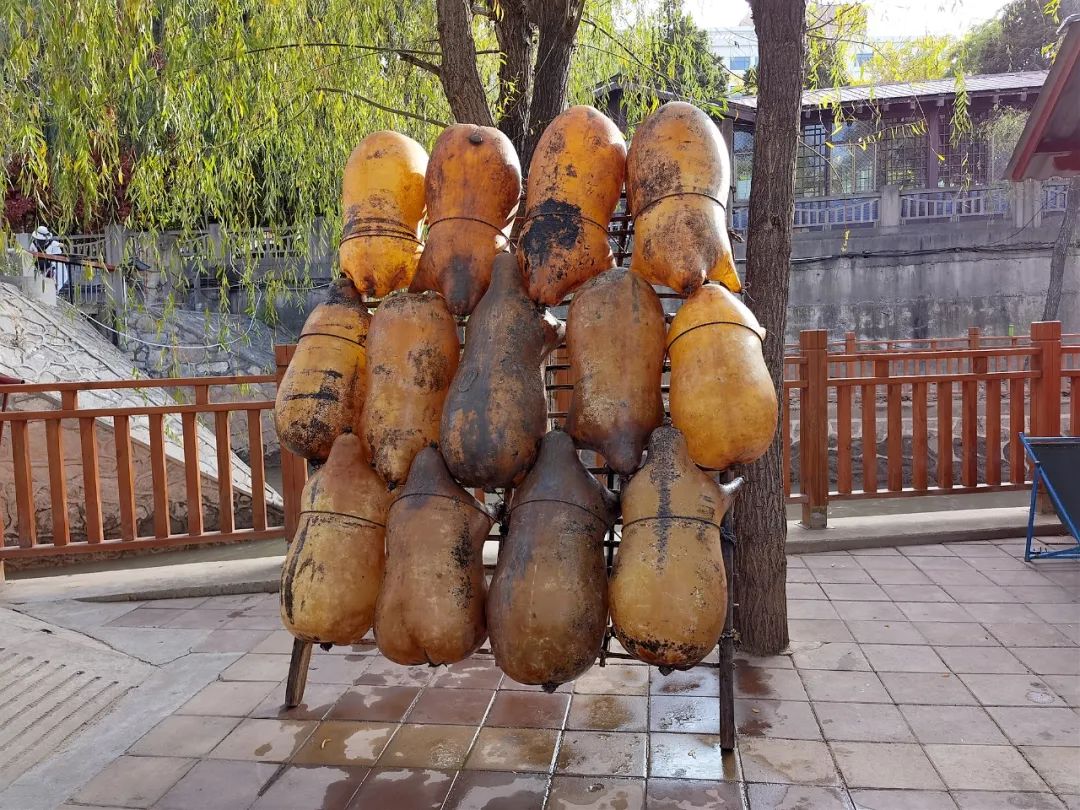
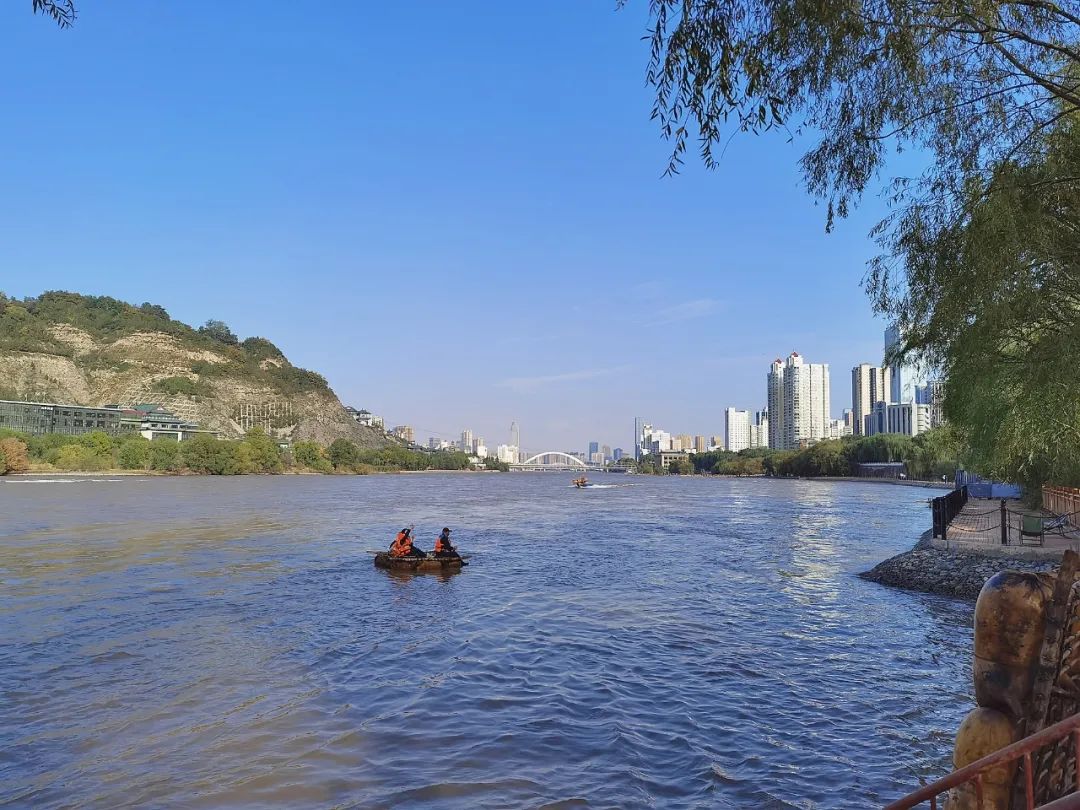
En el parque Waterwheel hay un pequeño muelle. Las balsas de piel de oveja, que en aquella época eran el medio de transporte a través del río, se han convertido en un dispositivo para que los turistas experimenten y jueguen aquí. Súbete a la balsa de piel de oveja y rema a lo largo del río ondulado hasta el muelle río abajo, donde la lancha rápida arrastrará la balsa de piel de oveja. Imagínese cómo sería sentarse en una balsa de piel de oveja en el ancho río, en las ondulantes aguas amarillas, y disfrutar del hermoso paisaje a ambos lados del río. Desafortunadamente, este es principalmente un proyecto para jóvenes.
Continúa caminando hacia adelante y llegarás a la Escultura de la Madre del Río Amarillo.
Nosotros decimos a menudo que el río Amarillo es la cuna de la nación china y el río madre de la nación china.
"El agua del río Amarillo viene del cielo y corre hacia el mar para nunca regresar". El río Amarillo se origina en el pie norte de las montañas Bayan Har en la meseta Qinghai-Tíbet. Fluye a través de 9 provincias (regiones) en. China de oeste a este, con una longitud total de unos 5.464 kilómetros. Cubre un área de aproximadamente 752.443 kilómetros cuadrados y desemboca en el mar de Bohai en el este.
La cuenca del río Amarillo, que se extiende por miles de kilómetros, tiene un clima templado y condiciones hidrológicas superiores, lo que favorece el crecimiento de los cultivos. Nuestros antepasados ya en la antigüedad se establecieron aquí, vivieron y se multiplicaron. Las dinastías Xia, Shang y Zhou en la etapa inicial de la cultura china, así como las posteriores dinastías Han Occidental, Han Oriental, Sui, Tang y Song del Norte, fueron varias dinastías unificadas poderosas. Sus áreas centrales también estaban en el medio. y el curso inferior del río Amarillo; muchos clásicos antiguos reflejan la sabiduría de la nación china también se produjeron aquí obras de ciencia y tecnología, invenciones, construcción urbana, literatura y arte que marcaron la civilización antigua. El río Amarillo como río madre también está incluido en esto.
La escultura de la Madre del Río Amarillo ubicada en la sección central de Binhe Road en Lanzhou está compuesta por "madre" y "bebé", que simbolizan respectivamente a la madre del Río Amarillo y a los descendientes de China. Este es otro punto de registro de celebridades de Internet en Lanzhou. Cuando me acerqué, vi a muchos turistas tomando fotos debajo de la escultura y había mucho bullicio. Un grupo acababa de salir y otro grupo regresaba. Algunos grupos de turistas toman fotografías grupales y fotografías individuales, por lo que es difícil tener tiempo libre debajo de las esculturas.
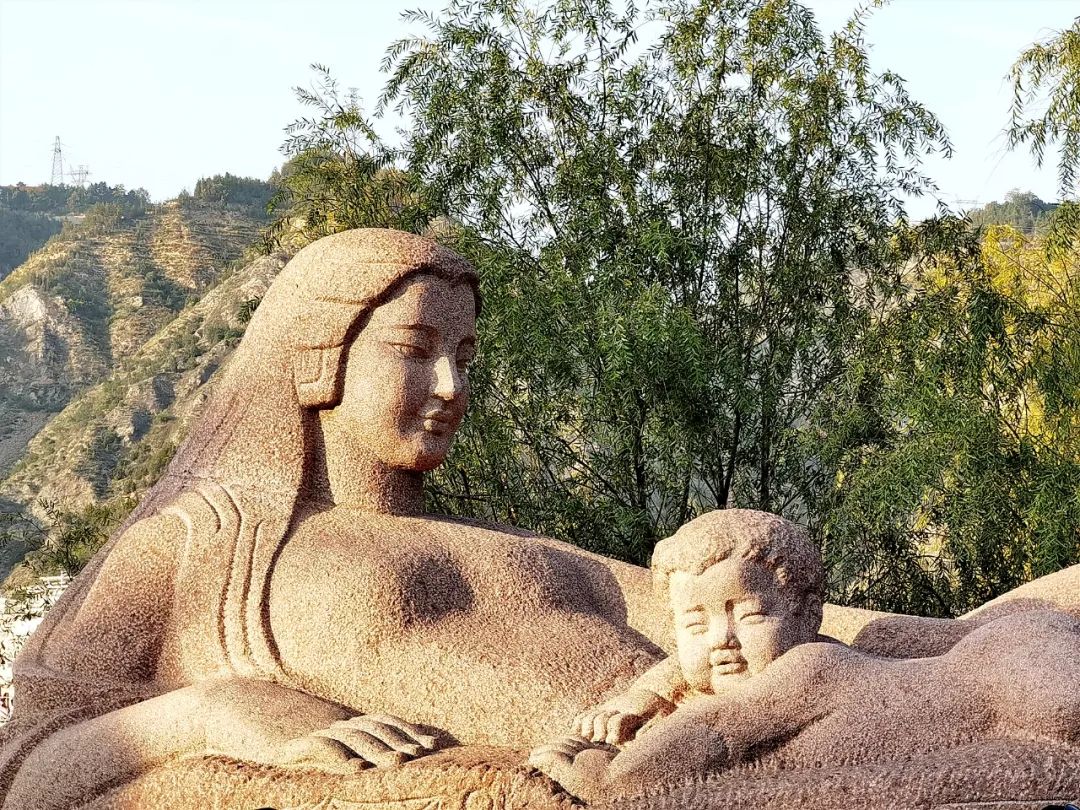
A medida que se pone el sol, la suave luz del sol brilla sobre la escultura. La madre tumbada boca arriba sobre las olas parece aún más gentil, amable y pacífica. El bebé nada en brazos de su madre, su rostro joven está lleno de felicidad y seguridad.
Al ver que había demasiada gente frente a la escultura, me paré en un escalón desde lejos y miré el rostro de mi madre durante mucho tiempo, sintiendo su bondad y ternura en mi corazón. Antes de partir, volví a tomar una foto como recuerdo de mi visita.
Un lugar con profunda historia y cultura siempre te brindará una sensación diferente cada vez que vengas, permitiéndote calmarte y saborear, explorar y pensar lentamente. Lanzhou es uno de esos lugares.
Después de visitar los tres lugares pintorescos a lo largo del río Amarillo, se hacía tarde y ya era hora de cenar.
En el pasado, cuando venía a Lanzhou, siempre estaba por negocios y iba y venía con prisa. Esta vez es la adecuada, puedo tener tiempo para visitar el mercado nocturno de Lanzhou y probar las delicias de Lanzhou. Después de buscar en Baidu, hay un mercado nocturno de bocadillos en Zhengning Road en Lanzhou, por lo que puedes tomar un taxi hasta allí.

Al viajar a una ciudad o lugar, además de hacer turismo, si no paseas por las calles y callejones, y no pruebas las delicias y bocadillos locales, puedes decir que este “recorrido” no es adecuado. En Lanzhou, alguien dijo: "Nunca has estado en el mercado nocturno de refrigerios de Lanzhou Zhengning Road, por lo que te da mucha vergüenza decir que has estado en Lanzhou."
La calle de bocadillos del mercado nocturno de Lanzhou Zhengning está ubicada en el extremo sur de Qingyang Road desde la puerta Shuangcheng hasta Nanguan Cross. Toda la calle de bocadillos tiene solo unos 200 metros de largo y ambos lados están llenos de bocadillos del norte de China. Todas las noches, las calles se llenan de puestos, muy iluminados y llenos de gente. Aquí se reúnen todos los bocadillos especiales del norte, incluidos fritos, a la parrilla, salteados, hervidos y diversos métodos de cocción. Aunque la comida aquí es principalmente barbacoa, es la barbacoa única de Lanzhou. Al caminar por la calle, los artículos en los puestos de comida de ambos lados son deslumbrantes y hacen que la gente saliva. Realmente no sé qué comer.


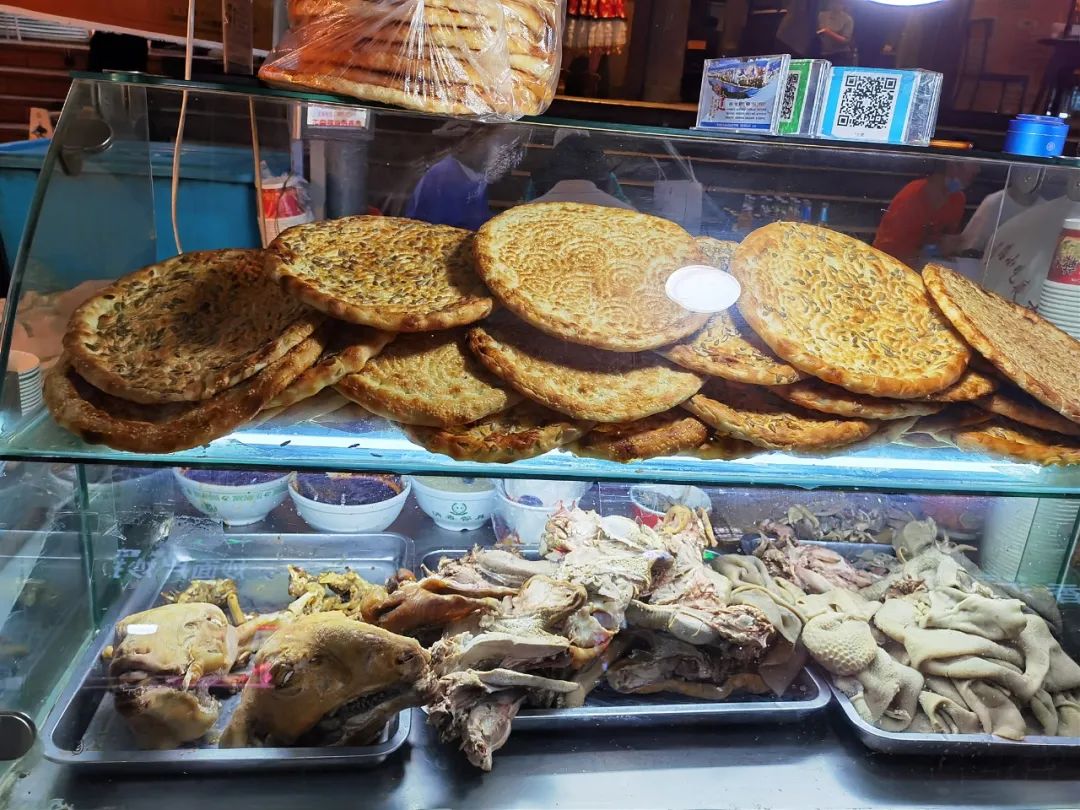
Nuestro grupo encontró un restaurante y pidió algunos bocadillos. No pude terminarlo, así que tuve que dejar los bocadillos no consumidos en mi memoria y probarlos nuevamente cuando tenga la oportunidad.
